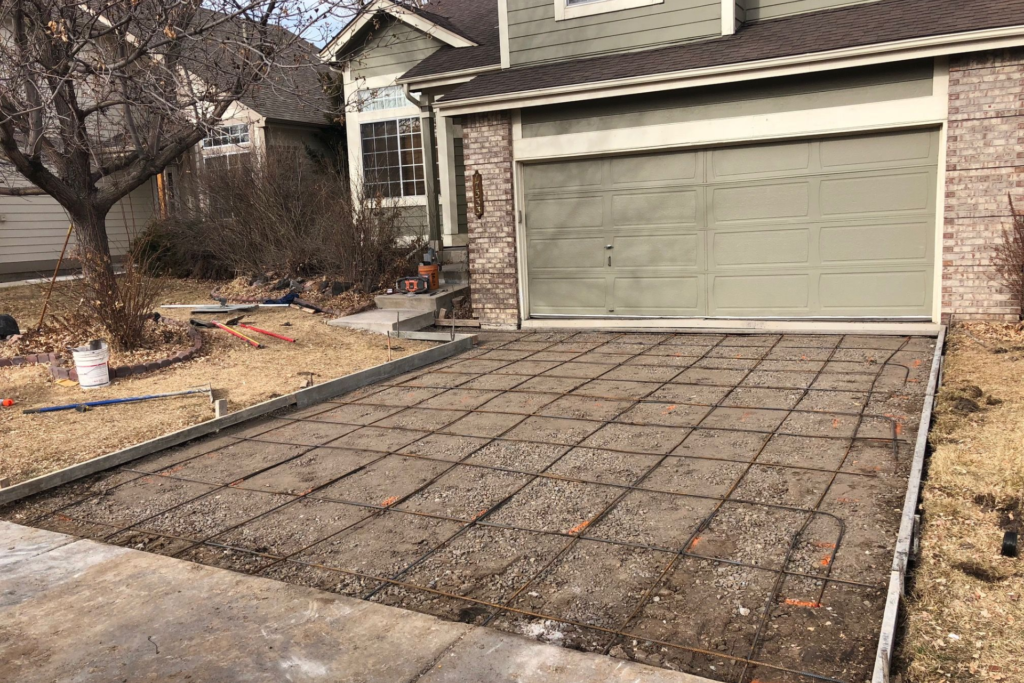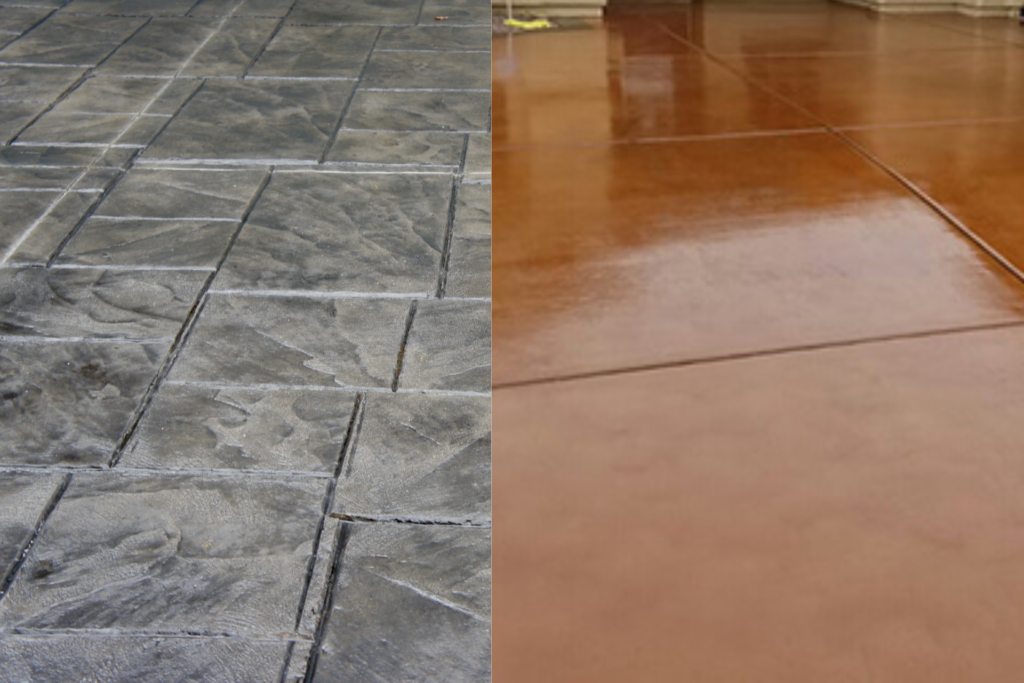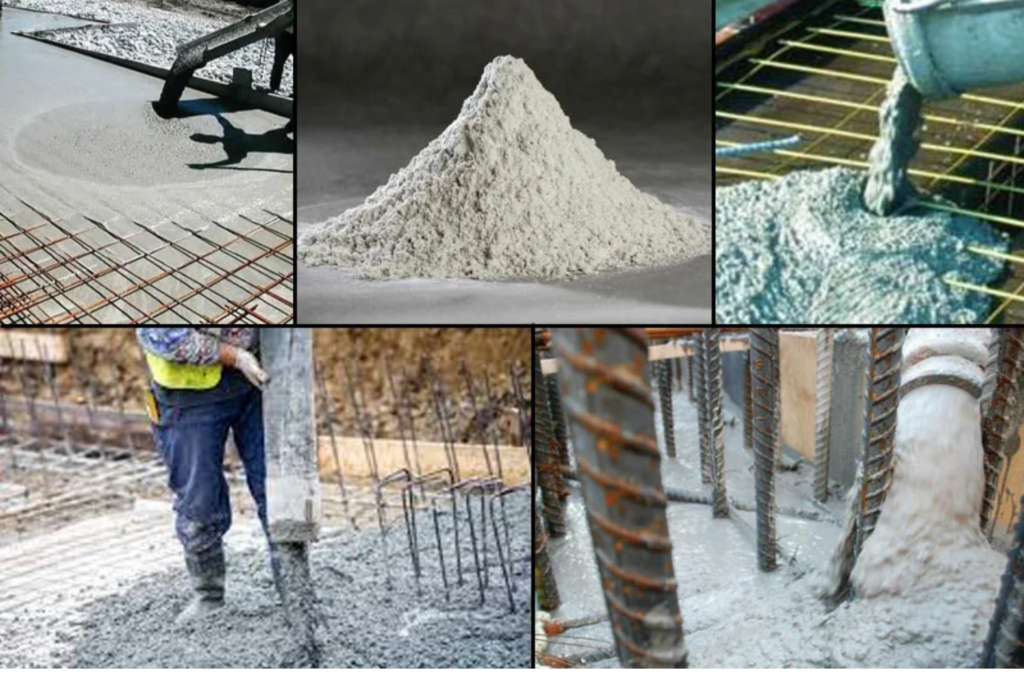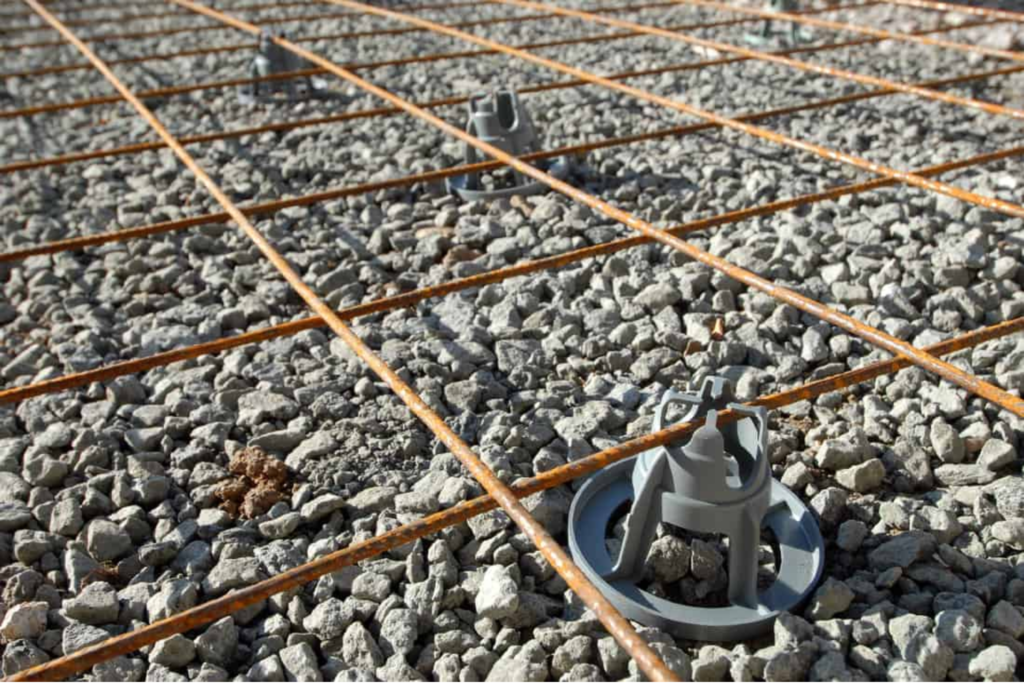Welcome to your comprehensive guide on understanding whether the chlorine from your pool could be damaging your concrete. As a pool owner, maintaining clean and clear water is a top priority, and chlorine plays a crucial role in that. However, there’s often a lingering question: does all that chlorine pose a risk to the surrounding surfaces, especially the concrete? In this article, we’ll dive into the science behind chlorine’s impact, explore potential signs of damage, and provide practical tips to help you protect your poolside concrete for the long run. Let’s get started.
Chlorine from your pool can gradually damage concrete over time if not properly managed. High chlorine levels and unbalanced pH can cause surface erosion, cracks, and discoloration in poolside concrete. To protect concrete, regularly clean the surface, apply sealants, and maintain balanced chlorine and pH levels in your pool.
Table of Contents
Understanding Chlorine’s Role In Pool Maintenance
Maintaining a clean and safe pool requires careful attention to the chemicals used to keep it free from harmful microorganisms. One of the most critical components in pool care is chlorine. If you’re a pool owner, understanding the role of chlorine in pool maintenance is essential for keeping your water crystal-clear and safe for swimming.
What Does Chlorine Do for Your Pool?
Chlorine serves as the primary disinfectant in swimming pools, making it indispensable for pool sanitation. Its main function is to kill harmful bacteria, viruses, and algae that can grow in your pool water. When chlorine is introduced to pool water, it undergoes a chemical reaction that produces hypochlorous acid (HOCl). This compound penetrates the cell walls of pathogens and destroys them, keeping the water safe and clean.
Regular use of chlorine also prevents the growth of algae, which can cloud your pool’s water and make surfaces slippery and dangerous. Without proper chlorine levels, pools would quickly become a breeding ground for bacteria and algae, compromising the health of swimmers and the overall enjoyment of your pool.
There are several ways to add chlorine to your pool. Chlorine tablets are a common and convenient option, slowly dissolving over time and maintaining a steady release of chlorine. Alternatively, you can use liquid chlorine, which acts quickly but needs more frequent application. No matter the method, it’s crucial to monitor and manage chlorine levels consistently to ensure effective pool sanitation.
For optimal results, pool owners should maintain chlorine levels between 1.0 and 3.0 parts per million (ppm). This range ensures the water remains free of harmful contaminants without posing a risk to swimmers. Regularly testing your pool’s chlorine levels and adjusting them as needed is key to keeping the water safe.
How Much Chlorine is Too Much?
While chlorine is essential for keeping pools clean, too much or too little can create issues. Balancing the right amount of chlorine is crucial, not only for swimmer safety but also to protect your pool equipment and structures.
High chlorine levels in pools can cause irritation to the skin, eyes, and respiratory system of swimmers. Excessive chlorine can also corrode pool surfaces, such as tiles and liners, potentially leading to costly repairs. In extreme cases, high chlorine levels can create an unpleasant swimming environment with a strong chemical odor, which deters people from enjoying the pool.
On the other hand, low chlorine levels are equally concerning. Insufficient chlorine reduces the water’s ability to kill harmful bacteria and algae, turning your pool into an unsanitary environment. Low chlorine levels can also lead to the buildup of organic matter like body oils and sweat, which contribute to cloudy or unpleasant-smelling water.
Maintaining a safe chlorine range of 1.0 to 3.0 ppm ensures that your pool water stays clean and healthy while preventing damage to pool surfaces. Testing your pool’s chlorine levels regularly is essential to avoid the negative impacts of both high and low chlorine levels. Tools such as pool test strips or digital chlorine testers make it easy to monitor these levels at home. When chlorine levels fall outside the safe range, you’ll need to take action—either by adding more chlorine if the level is too low or by diluting the water if the chlorine concentration is too high.
Understanding the importance of chlorine in maintaining a safe swimming environment and monitoring its levels will ensure a longer-lasting, cleaner, and more enjoyable pool.
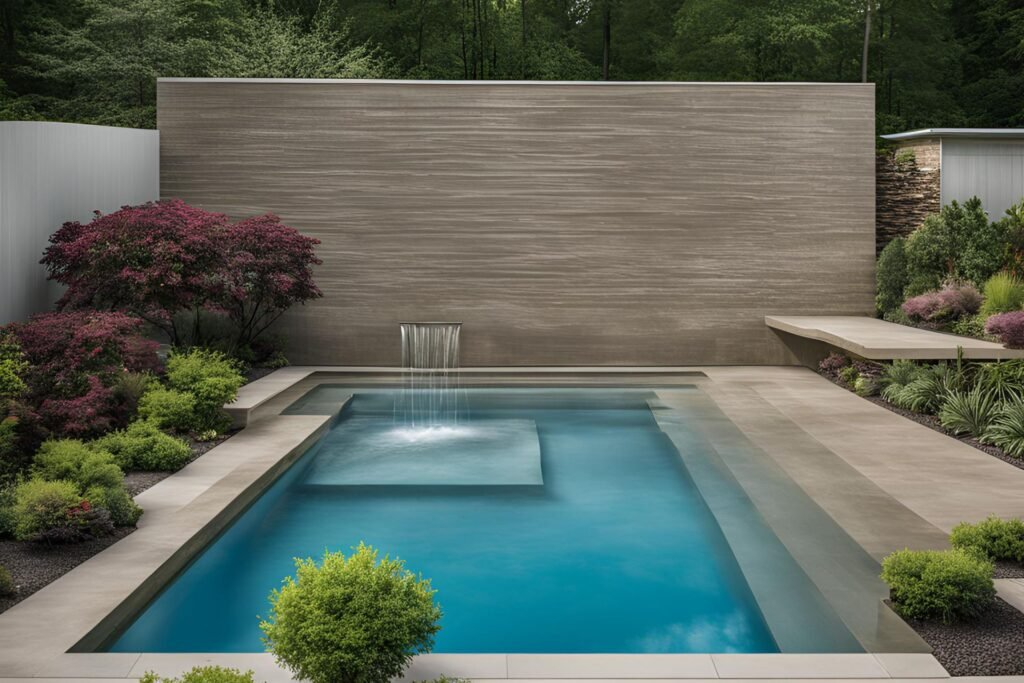
Does Chlorine Affect Concrete? The Science Behind It
When it comes to concrete in pool areas, understanding how chlorine and other pool chemicals impact this commonly used material is essential. Chlorine is crucial for maintaining pool hygiene, but its effects on concrete surfaces might not always be evident. This section dives deep into the science of how concrete interacts with chlorine, the role of pH levels, and whether pool-specific concrete materials are better suited to withstand chemical exposure.
How Concrete Reacts to Chemicals Like Chlorine
To understand how chlorine affects concrete, we first need to break down what concrete actually is. Concrete is composed of cement, aggregate (such as sand or gravel), and water. These components combine to form a solid structure, but over time, concrete can become porous, allowing water and chemicals to seep into its surface. When exposed to pool water containing chlorine, this chemical can potentially interact with the concrete on a molecular level.
Chlorine is typically acidic, and when in contact with porous concrete, it can lead to chemical reactions that gradually weaken the material. The chlorine ions may penetrate the concrete and begin to break down its components, especially if the surface is not sealed or properly maintained. Over time, this can result in the degradation of the concrete, causing cracks or surface erosion. This process of chlorine damage to concrete is especially concerning for pools where long-term chemical exposure is inevitable.
The Role of pH Levels in Chlorine’s Effect
The relationship between chlorine and pH levels plays a significant role in the potential damage to concrete surfaces. Chlorine’s effectiveness as a disinfectant depends on the water’s pH balance, and maintaining the correct pH levels is not just important for water clarity and swimmer safety—it also impacts how the water interacts with concrete.
When the pH levels in a pool drop too low (becoming too acidic), the water can become more corrosive, increasing the risk of concrete deterioration. On the other hand, if the pH rises too high (becoming too alkaline), the chlorine in the pool becomes less effective, potentially leading to algae growth and other issues. Both extremes can have negative effects on concrete, with acidic water accelerating erosion and alkaline water leaving calcium deposits, which can affect the concrete’s integrity over time.
Proper pH balance is therefore crucial in preventing concrete damage. Pool owners should aim to keep their pH levels between 7.2 and 7.8, which is ideal for both swimmer comfort and protecting pool surfaces.
Is Pool Concrete Specially Made to Withstand Chlorine?
Given the exposure to chemicals, especially chlorine, pool-specific concrete installations are often designed to resist such damage. Pool-grade concrete or specialized coatings are used to minimize the effects of constant exposure to water and pool chemicals. These types of concrete are formulated with specific materials or additives that enhance their durability, reducing their porosity and making them less susceptible to chemical damage.
Regular concrete, on the other hand, might not offer the same level of protection. Without the proper sealing or protective coatings, it can be more vulnerable to chlorine, leading to faster degradation over time. Pool-specific concrete, or even chlorine-resistant concrete coatings, help extend the lifespan of the pool’s structure, ensuring that it can handle long-term chemical exposure without significant damage.
For anyone building or maintaining a pool, it’s essential to ensure that the concrete used is suited for such environments. Whether it’s through specially designed concrete mixes or applying resistant coatings, these measures can make a substantial difference in preventing chlorine damage.
In conclusion, chlorine’s effect on concrete is a topic that requires attention, especially for pool owners and builders. From the role of pH levels to the use of specialized materials, understanding how to protect concrete surfaces from chemical damage is crucial for the long-term durability and aesthetic appeal of any pool. Proper maintenance, pH balancing, and the right construction materials are key factors in ensuring that concrete remains resilient against chlorine exposure.

Signs That Your Concrete May Be Suffering Chlorine Damage
Concrete is a durable material, but it’s not invincible—especially when exposed to harsh pool chemicals like chlorine. Over time, chlorine can cause significant damage to concrete, particularly in areas around pools. Recognizing the early signs of concrete deterioration is crucial for preventing more severe damage and maintaining the integrity of your pool area. This section will guide you through the most common signs of chlorine damage and how to spot them early, so you can act quickly and preserve the longevity of your poolside surfaces.
Common Signs of Concrete Damage from Pool Chemicals
Pool chemicals, especially chlorine, are essential for maintaining safe water conditions, but they can also lead to serious damage to the surrounding concrete if not managed properly. Here are some of the most common symptoms of chlorine damage to concrete surfaces:
- Visible Cracks: One of the most obvious signs that your concrete is suffering from chemical exposure is the appearance of cracks. While cracks can occur due to normal wear and tear, chlorine can accelerate the breakdown of concrete, leading to “chlorine-caused cracks” that can widen and deepen over time. These cracks are often the first indication that your poolside concrete is in trouble.
- Discoloration: Another sign of chlorine damage is discoloration of poolside surfaces. Concrete that is regularly exposed to high levels of chlorine can become stained or develop uneven patches of color. This “discoloration of poolside surfaces” is a clear sign that the chemical is starting to impact the integrity of the material.
- Surface Erosion: Over time, chlorine can cause “concrete erosion,” where the top layer of the concrete begins to wear away. You may notice rough patches or areas where the surface feels uneven or pitted. This erosion weakens the concrete, making it more susceptible to cracking and other forms of damage.
- Flaking: Flaking, also known as spalling, is another common symptom of chemical exposure. As the concrete deteriorates, small pieces of the surface may begin to peel or flake off, leaving the area vulnerable to further damage. Flaking is not only unsightly but also a sign that your concrete has been weakened by prolonged chemical exposure.
It’s important to understand the difference between regular wear and tear and chemical damage. Regular wear may result in minor surface cracks or slight discoloration, but chlorine-caused damage is often more severe and progresses more quickly. If you notice any of these signs, it’s likely that the chemicals used in your pool are starting to take a toll on your concrete.
How to Spot Early Warning Signs Before Damage Becomes Severe
Catching chlorine damage in its early stages can save you time and money by preventing more extensive repairs down the line. Here are some tips to help you spot early signs of concrete damage before it becomes a major problem:
- Inspect the Pool Area Regularly: One of the best ways to prevent severe damage is by inspecting your pool area on a regular basis. Look closely at the concrete surfaces surrounding your pool, paying particular attention to areas near the waterline. Changes in texture, such as rough patches or pitting, could be early indications of “concrete erosion” caused by pool chemicals.
- Check the Surface Texture: Run your hand over the concrete surface to feel for any changes in texture. A rough, grainy texture is a common sign of surface erosion, while flaking or peeling could indicate more advanced deterioration. Regularly checking for these changes can help you catch “early signs of pool surface wear” before the damage becomes too severe.
- Monitor the Waterline Area: The area around the waterline is often the most vulnerable to chlorine damage, as it’s exposed to constant splashing and chemical runoff. Pay attention to any discoloration or cracks that appear in this area, as they can be early warning signs of more significant issues to come. By maintaining the poolside concrete and keeping an eye on these areas, you can spot problems before they escalate.
- Regular Maintenance and Monitoring: Consistent maintenance is key to “preventing concrete damage.” Ensure that your pool’s chemical levels are properly balanced, and clean the surrounding concrete surfaces regularly to remove any chemical buildup. Routine inspections will help you identify potential issues before they lead to costly repairs.
By staying proactive and addressing small issues as they arise, you can extend the life of your poolside concrete and avoid the need for more extensive repairs. Maintaining the structural integrity of your pool area doesn’t have to be complicated, but it does require vigilance and a commitment to regular upkeep.
In conclusion, knowing the signs of chlorine damage and taking steps to address them early can make all the difference in maintaining your pool’s appearance and functionality. From spotting “early signs of pool surface wear” to understanding the symptoms of “concrete erosion,” staying informed and proactive will help ensure that your poolside surfaces remain in top condition for years to come.

How To Protect Your Concrete from Chlorine Damage
Concrete surrounding a pool can take quite a beating from constant exposure to chlorine and other chemicals. Over time, this exposure can lead to degradation, discoloration, and cracking. Understanding how to protect your poolside concrete from chlorine damage is crucial for maintaining its longevity and appearance. In this section, we’ll explore practical tips on maintaining your concrete, choosing the right sealants, and managing pool chemistry to protect your surfaces effectively.
Routine Maintenance Tips for Poolside Concrete
Routine maintenance is the cornerstone of preserving your concrete from the harsh effects of chlorine. Chlorine, especially in pools, can leave behind residues that wear down the surface over time. Implementing simple, consistent practices can go a long way in preventing long-term damage.
- Regular Washing: One of the simplest ways to keep your poolside concrete in top shape is by washing it regularly. Using a garden hose or pressure washer to rinse off chlorine and other chemical residues will prevent them from soaking into the concrete, where they can cause erosion. Regular cleaning is key to preserving the strength and appearance of the concrete surface.
- Resealing and Protective Coatings: Applying a concrete sealant or protective coating every few years is one of the best ways to shield your concrete from chlorine damage. Sealants act as a barrier, preventing water and chemicals from penetrating the surface. Over time, pool chemicals can wear down this protection, so resealing is an essential part of pool concrete maintenance. Not only does it protect the surface, but it also enhances its appearance and longevity.
- Proper Drainage: Ensuring proper drainage around your pool area is essential. When water sits on the concrete, it can soak into the surface, leading to chemical damage and cracking over time. Make sure that the surrounding landscape is graded appropriately, and drainage systems are functioning correctly to move water away from the pool deck.
Choosing the Right Sealants and Coatings
Selecting the correct sealants and coatings is critical for creating a protective barrier between your concrete and the corrosive effects of chlorine. With various products available on the market, it’s important to understand which ones offer the best protection for poolside environments.
- Types of Sealants and Coatings: There are several types of sealants designed specifically for concrete exposed to pool chemicals. Epoxy coatings, acrylic sealers, and polyurethane sealants are some of the most popular choices. Each product offers unique advantages, such as increased durability, UV resistance, or enhanced waterproofing, making it important to choose based on your pool environment and exposure levels.
- Recommended Products: For poolside concrete, look for products labeled as chlorine-resistant or designed for high chemical exposure. These products are formulated to resist the harsh effects of pool chemicals, ensuring that your concrete remains protected for longer periods. Popular brands often provide detailed guidance on their suitability for chlorine and water protection, so be sure to research the best options for your specific needs.
pH and Chlorine Level Maintenance Tips
Beyond physical protection, proper pool chemistry is essential in preserving your concrete. Imbalanced chlorine or pH levels can accelerate concrete deterioration, leading to more frequent repairs and costly maintenance. Learning how to manage these levels effectively is just as important as choosing the right coatings and sealants.
- Testing and Maintaining Chemical Levels: Keeping the chlorine and pH levels within recommended ranges is key to preventing unnecessary chemical wear on your concrete. Testing kits are available at most pool supply stores, allowing you to check the chemical balance regularly. Ideally, chlorine levels should be kept between 1-3 ppm (parts per million), and pH levels should range from 7.2 to 7.6. When levels are too high, the chemicals become more aggressive, wearing down concrete surfaces faster.
- Tools for Pool Maintenance: There are a variety of tools available for pool owners to easily monitor and adjust chemical levels. Automatic chemical feeders, test strips, and digital testers can make it easy to maintain a consistent balance. Ensuring these levels remain stable not only extends the life of your pool concrete but also improves overall pool water quality.
By following these steps, you can effectively protect your poolside concrete from the damaging effects of chlorine and other pool chemicals. Regular maintenance, proper use of sealants, and careful monitoring of chemical levels will keep your concrete in pristine condition for years to come.

What To Do If You Already Have Chlorine Damage
If your poolside concrete has suffered from chlorine damage, it’s essential to take prompt action to prevent further deterioration. Chlorine, while necessary for keeping your pool water safe, can cause concrete to degrade over time. This guide will walk you through practical steps for repairing chlorine-damaged concrete, whether you’re considering a DIY approach or deciding when it’s time to call in a professional.
How to Repair Concrete Damaged by Chlorine
Concrete wear and damage due to chlorine exposure can manifest in various ways. You might notice small cracks, flaking, or even discoloration on the surface of your pool deck. If you catch the problem early, there are some steps you can take to address it yourself.
1. Assess the Extent of the Damage: Start by evaluating the severity of the chlorine damage. Minor cracks and surface discoloration may be manageable with a DIY solution. However, if the concrete is crumbling or if the damage covers a large area, professional intervention may be required.
2. Clean the Affected Area: Before any repairs, thoroughly clean the damaged area. Use a pressure washer or a stiff brush to remove any debris, dirt, and weakened concrete. This will help ensure a strong bond between the damaged concrete and any repair materials.
3. Repair Small Cracks and Surface Damage: For minor cracks and surface wear, applying a concrete patching compound can be a cost-effective solution. Follow the manufacturer’s instructions carefully. These products are available at most hardware stores and are relatively easy to use. Simply fill the cracks, smooth the surface, and let it cure according to the product’s directions.
4. Seal the Concrete: Once repairs are complete, applying a sealant can help protect the concrete from future chlorine damage. Look for sealants specifically designed for poolside use, as they are made to withstand chemical exposure and moisture.
While DIY repairs can work for small-scale damage, it’s crucial to recognize when the damage is too severe for at-home fixes. If your poolside concrete is showing significant wear, it may be time to consult a professional for a more thorough solution.
When to Call a Professional for Help
In some cases, the chlorine damage to your concrete may be beyond the scope of DIY repairs. If the damage is widespread, deep, or affecting the structural integrity of your pool deck, it’s time to consider hiring a professional.
1. Surface Resurfacing for Extensive Damage: When surface damage is more severe, a professional may recommend resurfacing the entire area. This involves removing the damaged layer of concrete and applying a new layer to restore the appearance and durability of your pool deck. Professional resurfacing can not only fix the damage but also give your poolside a fresh, updated look.
2. Concrete Repair and Restoration Process: A contractor will assess the damage and recommend the best course of action, whether it’s resurfacing or a full repair. The process typically involves removing any severely damaged sections, reinforcing the area if necessary, and applying a new layer of concrete or patching compound. In some cases, additional waterproofing or sealing may be applied to prevent future chlorine damage.
3. Cost of Professional Repair: Hiring a contractor for concrete repair or resurfacing can vary in cost depending on the size of the area, the extent of the damage, and the materials used. Generally, professional concrete repair costs can range from $3 to $10 per square foot for resurfacing, with more extensive repairs costing more. While this can be a significant investment, it’s often the best option for ensuring long-lasting results.
4. Choosing a Qualified Contractor: When selecting a contractor, it’s essential to do your research. Look for professionals with experience in poolside concrete repair and ask for references or reviews. Make sure they are licensed, insured, and provide a clear estimate before starting the project.
Addressing chlorine damage to your poolside concrete is crucial for maintaining both the appearance and safety of your pool area. Whether you opt for DIY repairs or decide to call in a professional, timely action will prevent further damage and help you enjoy your pool for years to come. Remember to evaluate the damage carefully, and don’t hesitate to seek expert help when necessary to ensure the best results for your poolside concrete restoration.

Long-Term Prevention Strategies
When it comes to maintaining a pool, most homeowners focus on regular cleaning and chemical balance. However, long-term prevention strategies are just as crucial, especially for preserving the poolside surfaces and concrete areas from potential damage caused by chemicals, particularly chlorine. Below are some effective strategies you can implement to protect your poolside area and ensure its longevity.
Invest in Pool Covers and Barriers
One of the most effective ways to minimize chlorine exposure on poolside surfaces is by investing in high-quality pool covers. These covers act as a shield, reducing the amount of chlorine that can settle on nearby concrete, tiles, or other surfaces when the pool is not in use. Not only do pool covers help maintain your pool’s chemical balance, but they also protect the surrounding areas from chemical wear and tear over time.
In addition to using covers, consider installing barriers around your pool to prevent water from splashing onto the surrounding concrete. Continuous splashing can lead to gradual deterioration, especially when chlorinated water consistently makes contact with the surface. Barriers, such as pool fences or strategically placed walls, can effectively redirect splashes, keeping your pool area dry and minimizing the chance of long-term damage.
Choosing Pool-Friendly Landscaping
When designing or revamping your poolside area, it’s important to choose landscaping features that are both aesthetically pleasing and practical in terms of long-term protection. Certain plants, rocks, or ground coverings are better suited for withstanding exposure to pool chemicals. Opt for materials that are known to resist chlorine damage, such as decorative stones or chemically resistant plants, which can act as natural barriers between your pool and the surrounding surfaces.
Pool-friendly landscaping also helps protect your concrete by minimizing direct exposure to splashes and runoff water. Plants like ferns or ornamental grasses can absorb excess water, while natural rock formations can help direct water away from vulnerable areas. You can even use landscaping features like raised garden beds or stone pathways to create attractive yet functional borders around your pool.
When planning your poolside garden, consider searching for “poolside landscaping for concrete protection” or “best plants for pools” to discover the most suitable options. These pool-friendly decorative features not only enhance the overall look of your pool area but also contribute to its long-term maintenance.
Incorporating long-term prevention strategies, such as investing in pool covers and selecting the right landscaping materials, is key to protecting your poolside surfaces from chlorine and water damage. By making smart choices today, you can extend the life of your pool area and reduce the need for costly repairs down the line. For more ideas, explore “decorative pool features” that balance beauty and practicality, ensuring your poolside area stays in top shape for years to come.

FAQs: About Will The Chlorine From My Pool Damage The Concrete
Can chlorine from my pool damage concrete over time?
Yes, chlorine can gradually damage concrete, especially if levels are too high or if the pool’s pH is unbalanced. Over time, exposure to these chemicals can cause surface erosion, cracks, and discoloration in concrete surfaces.
How can I prevent chlorine from damaging my poolside concrete?
To prevent damage, regularly clean the concrete to remove chemical residue, apply protective sealants, and maintain balanced chlorine and pH levels in the pool water. Using a pool cover when the pool is not in use can also minimize exposure.
What are the signs of chlorine damage on concrete?
Signs of chlorine damage include surface erosion, cracks, discoloration, and a rough or flaky texture. You may also notice that the area near the waterline deteriorates faster than other sections of the concrete.
How often should I apply a sealant to my poolside concrete?
It is recommended to reseal poolside concrete every 1 to 3 years, depending on the climate, level of use, and exposure to chemicals. Regular resealing helps protect the concrete from chlorine and water damage.
Is pool-grade concrete more resistant to chlorine damage?
Yes, pool-grade concrete and specialized coatings are designed to be more resistant to chlorine and other pool chemicals. These materials are less porous and provide a protective barrier against chemical wear.
How do pH levels affect concrete near the pool?
pH levels that are too low (acidic) can speed up the chemical reaction between chlorine and concrete, causing faster erosion. Maintaining a balanced pH between 7.2 and 7.8 is critical for both the health of your pool water and the durability of your concrete surfaces.
Can I repair concrete that’s been damaged by chlorine?
Yes, minor damage like cracks or surface erosion can be repaired using concrete patch products or resurfacing techniques. For severe damage, it’s best to consult a professional contractor for proper repair or replacement.
What’s the best way to clean poolside concrete?
Regularly rinsing the concrete with water to wash off chemical residue is important. For deeper cleaning, use a mild detergent or specialized concrete cleaner. Avoid harsh chemicals that could further damage the surface.
Should I cover my pool to protect the concrete?
Yes, using a pool cover when the pool is not in use can help protect surrounding concrete from direct exposure to chlorine and reduce the amount of splash-out that reaches the concrete surfaces.
Can rainwater help reduce chlorine exposure on concrete?
Rainwater can wash away some chlorine from concrete, but it’s not enough to fully protect it. Regular maintenance like rinsing the area with clean water and applying sealants is still necessary to minimize damage.
Conclusion
In conclusion, chlorine plays an essential role in maintaining pool water quality, but over time, it can negatively impact the durability of concrete surfaces if not properly managed. To ensure your pool concrete remains strong and intact for years, it’s crucial to maintain balanced chemical levels, perform regular upkeep, and consider using protective coatings. With the right approach, you can preserve both the beauty of your pool and the longevity of its structure. Take proactive steps today by routinely checking your chlorine levels and safeguarding your poolside areas for long-term enjoyment.
About the Author:
Mike Veail is a recognized digital marketing expert with over 6 years of experience in helping tradespeople and small businesses thrive online. A former quantity surveyor, Mike combines deep industry knowledge with hands-on expertise in SEO and Google Ads. His marketing strategies are tailored to the specific needs of the trades sector, helping businesses increase visibility and generate more leads through proven, ethical methods.
Mike has successfully partnered with numerous companies, establishing a track record of delivering measurable results. His work has been featured across various platforms that showcase his expertise in lead generation and online marketing for the trades sector.
Learn more about Mike's experience and services at https://theleadguy.online or follow him on social media:











